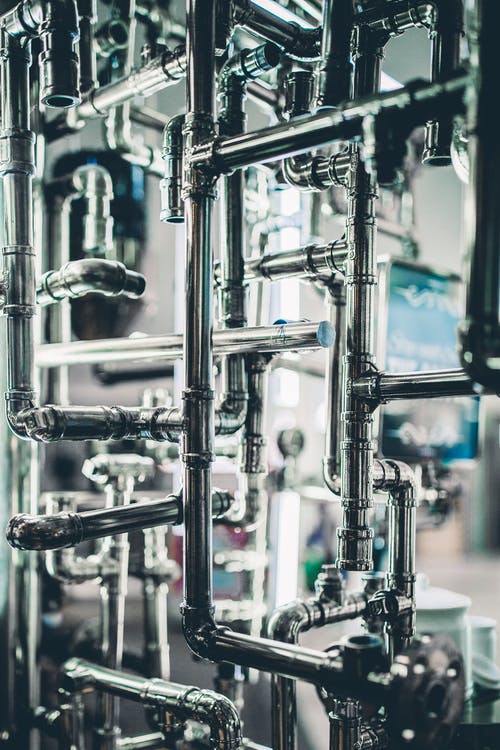Imagine starting a job only to find pipes under your feet that stop you in your tracks. Not being able to find these services can be frustrating and cause delays in building that cost a lot to fix. Sound pipe locators are the hidden stars of exploring underground.
These tools are made to pick up the faint sounds made by water or gas moving through pipes. This makes them essential for both workers and people who like to do their own repairs. With their amazing ability to find exact places without digging, they are a big step forward in utility monitoring technology.
This guide will teach you everything you need to know about sound pipe locators if you’ve ever thought how professionals find their way through the maze of underground pipes so easily. Get ready to find out what’s hidden below!
The Science Behind Pipe Locators That Use Sound
Acoustic pipe locators use sound waves to find pipes that are buried in the ground. The idea behind the acoustic pipe locator technology is that different things send sound in different ways. Mics that are responsive can pick up noises made by a pipe that is leaking.
These gadgets turn the movements into sounds that can be heard. An assistant looks for certain frequencies that are linked to different kinds of leaks or blockages. Other methods of finding things might not work in tough settings, but this one does.
That’s how accurate these locators are. Not only can they find the presence, but they can also find the depth and type of pipe involved. Users can learn a lot about underground infrastructure by looking at how sound moves through dirt and liquid.
This field of study combines sound with real-world applications, making it important for both engineers and service workers. If you understand this technology, you can fix and maintain important services more quickly.

Different Kinds of Acoustic Pipe Finders
There are different kinds of acoustic pipe locators, and each one is designed for a particular job. The most popular type is the compact form, which is easy to carry and use. These tools are great for research because they make it easy for techs to get to places that are hard to get to.
Fixed placement locators are in a different group. These devices are usually found in bigger buildings or public places that need to be watched all the time. They give real-time information about the state of the pipes and can quickly warn workers of possible leaks.
Then there are digital sound locators that are more complex. These tools are better at analysing sound waves than their analogue versions because they use more advanced technology. This leads to more accurate results and faster finding of problems in the piping system.
Some companies make specialised units that are made to work with different types of materials, like metal or plastic lines. This makes sure that the best performance is achieved no matter what building material is used.
Sound Pipe Locator: How to Use It
It’s easy to use a sound pipe finder, but accuracy is important. First, make sure the device is fully charged and set up to work at its best. Learn how to use the tools before going out into the field.
Next, find the spot where you think a pipe might be hidden. Pick a good starting place because sound waves behave differently when they pass through solids than when they pass through air.
Place the pinpoint above ground over the place you think it is. Start listening for sound waves or movements coming from the pipes below as soon as you turn it on.
Move slowly and change where you’re standing as needed to focus on any sounds you hear. If you need to, mark important areas to look into more later.
Once you’ve found possible places of interest, check them out with extra tools or methods if you need to. Always write down what you find so that you have a correct record of what’s below the surface.

Why you should use an acoustic pipe locater
Acoustic pipe locators are very useful in many fields, especially building and repair, because they have many benefits. One of the best things about them is that they can find leaks without having to dig. This saves time and money and also keeps the equipment that is already there safe.
By using sound technology, problems in pipes can be precisely located. This precision cuts down on guessing and the damage that could happen during fixes. These gadgets give teams rapid feedback, so they can act quickly in pressing scenarios and avoid more problems in the future.
Additionally, sound pipe locators are simple to use. Most of the time, they come with easy-to-use platforms that don’t need much training to work. People who aren’t very good with technology can quickly learn how to use these tools effectively.
Another important benefit is that it saves money. Buying good tools may cost more at first, but the money you save in the long run from not having to pay as much for labour and being able to solve problems quickly makes up for it.
You can’t forget about how flexible sound pipe locators are; they can be used on different types of lines made of different materials (like metal or plastic) and in different situations, even underground where sight is low.
As cities continue to grow and infrastructure gets older, it will become even more important to have solid ways to find things. Acknowledging technologies like sound pipe locators helps companies keep their systems in good shape and protects their investments from unplanned difficulties.












